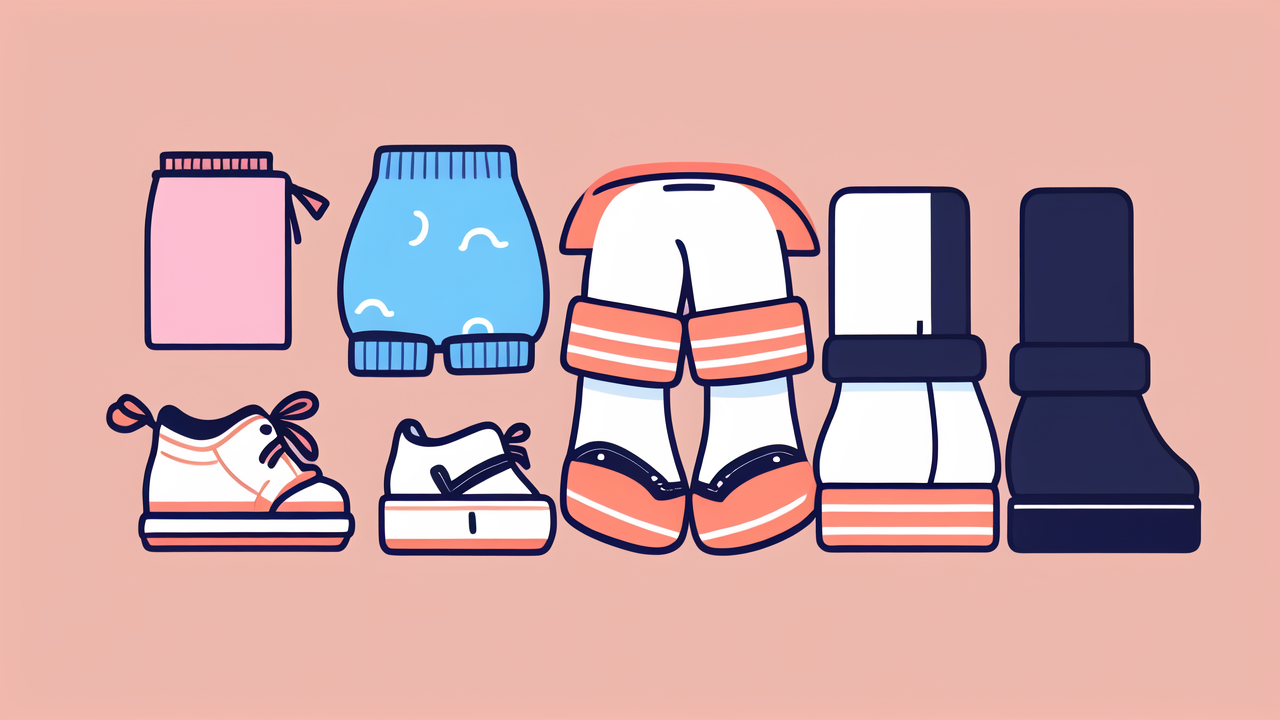
Thin Wool Socks: The Secret to Keeping Baby's Feet Cozy All Day
Why Thin Wool Socks Are the Best for Your Baby's Footwear
Understanding the Benefits of Wool for Baby's Feet
Wool socks are a game-changer for baby footwear. They offer unique benefits that other materials can't match. Wool is naturally soft and gentle on a baby's delicate skin. It's also breathable, which helps keep little feet dry and comfy.

One of the best things about wool is its temperature-regulating properties. It keeps feet warm in cool weather and cool in warm weather. This means your baby's feet stay at just the right temp all day long.
Wool is also naturally antimicrobial. This helps prevent odors and reduces the risk of skin irritations. It's a great choice for babies with sensitive skin or allergies.
Lastly, wool is durable and easy to care for. With proper care, wool socks can last through multiple washes and wears.
The Science Behind Thin Wool Socks and Skin Comfort
The science behind thin wool socks is fascinating. Wool fibers have a unique structure that makes them ideal for baby's skin. Each fiber is made up of tiny scales that overlap like shingles on a roof.
These scales allow the fiber to absorb moisture away from the skin. This keeps baby's feet dry and prevents chafing. The scales also create tiny air pockets that provide insulation.
Wool fibers can absorb up to 30% of their weight in moisture without feeling damp. This is why wool socks feel dry even when they're wet. This property helps regulate temperature and keeps baby's feet comfy.
Thin wool socks are especially good for babies. They provide all the benefits of wool without being too bulky. This allows for better movement and comfort in shoes or booties.
How to Choose the Right Thin Wool Socks for Your Baby
Factors to Look for When Buying Wool Socks
When shopping for thin wool socks for your baby, there are several key factors to consider:

- Material blend: Look for socks with a high percentage of wool. A blend of 70-80% wool with other fibers like nylon or spandex is ideal.
- Softness: Feel the socks. They should be soft and not scratchy against your skin.
- Fit: Choose socks that fit snugly but not too tight. They should stay up without leaving marks on baby's legs.
- Thickness: Opt for thin socks that won't bunch up in shoes or make feet sweat.
- Seamless design: Look for socks with flat or seamless toes to prevent friction and blisters.
- Care instructions: Check the label for easy care instructions. Machine washable socks are more convenient.
- Size range: Choose a brand that offers a good range of sizes to grow with your baby.
- Color and style: While not as important as comfort, fun colors and designs can make dressing baby more enjoyable.
The Importance of Quality and Durability in Baby's Wool Socks
Quality and durability are crucial when it comes to baby's wool socks. High-quality socks may cost more upfront, but they'll save you money in the long run. They last longer and perform better than cheaper alternatives.
Look for socks made by reputable brands known for their quality. Check reviews from other parents to get an idea of how well the socks hold up over time. Good wool socks should maintain their shape and softness after multiple washes.
Durability is especially important for active babies. The socks should be able to withstand crawling, walking, and playing without wearing thin or developing holes. Reinforced heels and toes can add to the sock's lifespan.
Quality wool socks also retain their benefits longer. They'll continue to regulate temperature and wick away moisture even after many wears and washes. This means more comfort for your baby and less frequent replacements for you.
Incorporating Thin Wool Socks into Your Baby's Daily Wardrobe
Tips for Dressing Baby with Comfort in Mind
Dressing your baby in thin wool socks can be part of a comfortable daily outfit. Here are some tips to keep in mind:

- Layer wisely: Use thin wool socks as a base layer. They work well under shoes or booties.
- Match with outfits: Neutral colors like white, gray, or beige go with everything. But don't be afraid to have fun with colors and patterns too.
- Consider the weather: Thin wool socks are great year-round, but you may need to adjust other clothing layers.
- Pack extras: Always have a spare pair in your diaper bag. Accidents happen, and fresh socks can be a quick comfort fix.
- Use for sleep: Thin wool socks can help regulate body temperature during naps and nighttime sleep.
- Pair with soft shoes: Choose shoes made from breathable materials to complement the benefits of wool socks.
- Monitor for comfort: Watch for signs that your baby is too hot or cold, and adjust clothing as needed.
Remember, every baby is different. Pay attention to what works best for your little one's comfort and adjust as needed.
Seasonal Changes: Swapping Wool Socks for Warmer Winter Gear
While thin wool socks are great year-round, you may need to adjust your baby's foot gear as seasons change. In colder months, you might swap thin socks for thicker ones or add booties over the socks.
For very cold weather, consider layering. Start with thin wool socks, then add a thicker pair of wool or fleece socks over them. This creates a warm, insulating layer while still allowing feet to breathe.
In warmer months, thin wool socks can still be useful. They help wick away sweat and prevent overheating. You might use them alone or with lightweight shoes or sandals.
Remember to always check your baby's feet to ensure they're not too hot or cold. Adjust clothing as needed to keep your little one comfortable in any weather.
